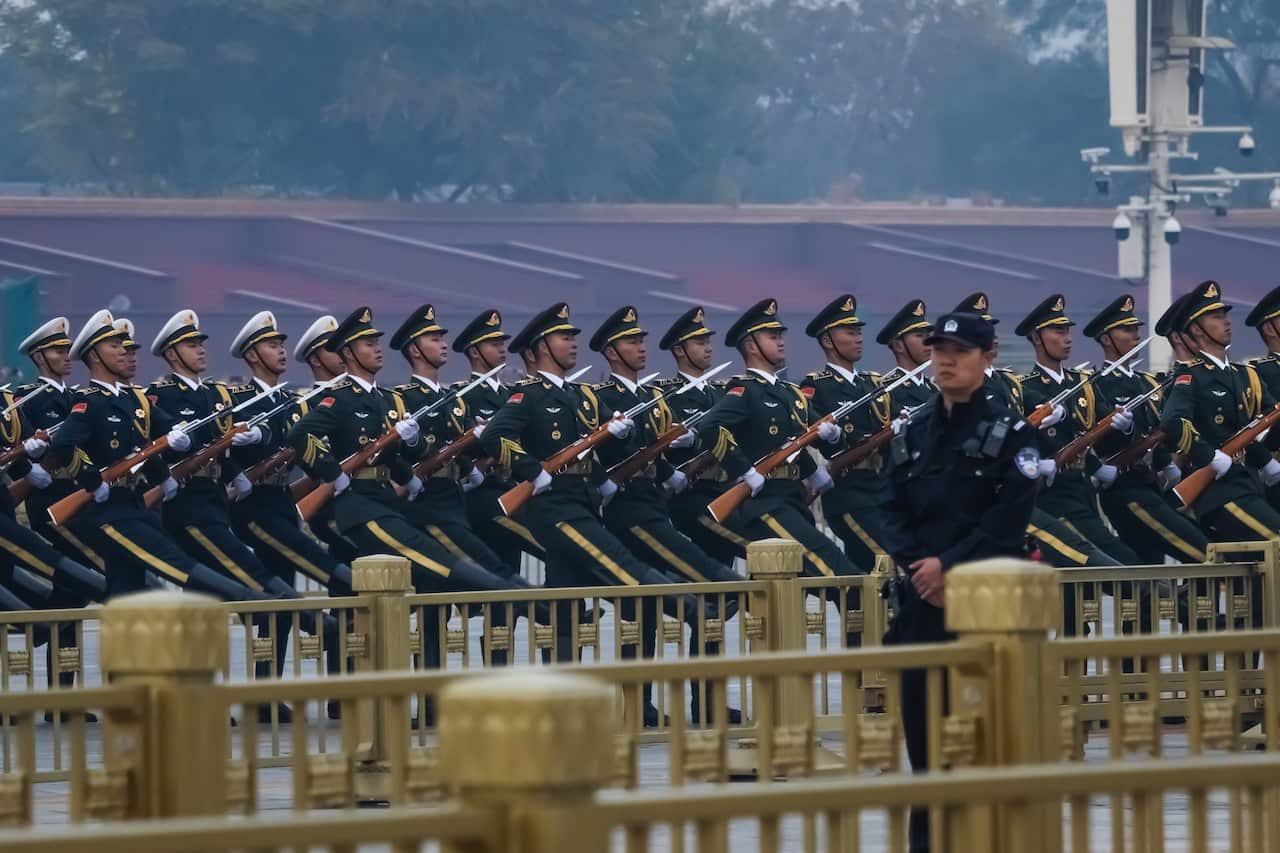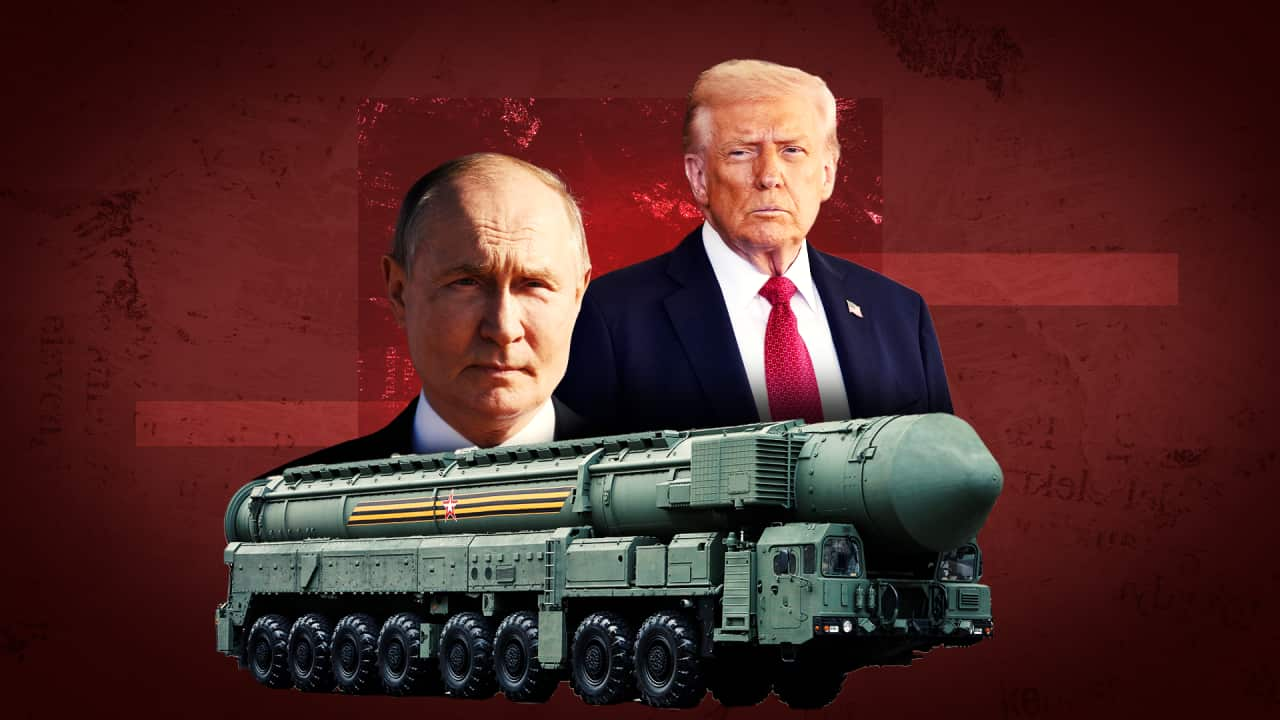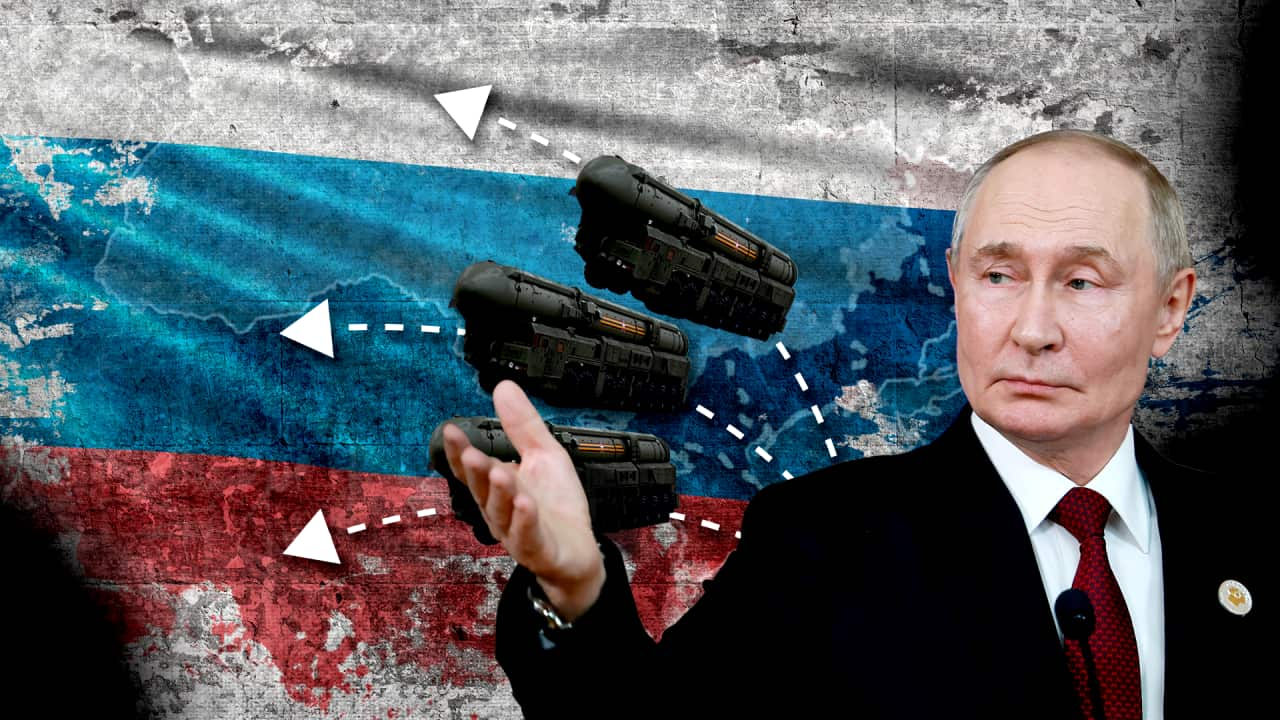It's been 80 years since the United States dropped atomic bombs on Japan's Hiroshima and Nagasaki — the only time nuclear weapons have been used in warfare.
It's also been more than three decades since the world's last major nuclear test, marking the end of an era of full-scale detonations — and a shift toward testing weapon designs through computer simulations and other technical methods that don't require an explosion.
But recently, nuclear weapons have returned to the the global spotlight after claims made by US President Donald Trump. But there have also been unexpected talk of cooperation.
Trump to 'maybe work on a plan to denuclearise' with China and Russia
Last week, US President Donald Trump said the US would resume nuclear testing after a halt of 33 years, a move that appeared to be a message to rival nuclear powers Russia and China.
It was unclear whether he meant testing weapons systems or actually conducting test explosions — something the US has not done since 1992.
That same week, Trump told US broadcaster CBS that China and Russia were secretly testing nuclear weapons. The claim came days after the US president's nominee to head US Strategic Command told the Senate Armed Services Committee "neither China or Russia has conducted a nuclear explosive test".
China has also denied the claim, with foreign ministry spokesperson Mao Ning saying it has "abided by its commitment to suspend nuclear testing".
On Wednesday, Trump raised eyebrows with comments about possible cooperation with Russia and China to denuclearise, even as all three nations continue to modernise their nuclear arsenals.
Trump told reporters: "We're the number one nuclear power, which I hate to admit because it's so horrible. Russia's second. China's a distant third, but they'll catch us within four or five years."
"Maybe work on a plan to denuclearise, the three of us? We'll see if that works."
He did not provide any further details.
Trump previously floated denuclearisation talks with China and Russia in February, saying there was "no reason for us to be building brand new nuclear weapons".

China is investing billions in new missile systems, nuclear submarines, and hypersonic delivery vehicles, a quiet but determined buildup that is changing the global balance of power. Source: Getty / Cheng Xin
The fresh comments have fuelled speculation about whether the White House is considering new arms-control talks, or simply sending a message of power to its rivals.
Russia to 'maintain nuclear potential', defence minister says
In Moscow, Russian President Vladimir Putin was quick to respond to Trump's surprise instruction, ordering his top officials to prepare for the possibility of resuming nuclear testing for the first time in over three decades.
It follows Russia's recent testing of a low-flying cruise missile that is not only capable of carrying a nuclear warhead but is also nuclear-powered. However, the Kremlin has insisted this did not constitute a direct test of an atomic weapon.
Russia's defence minister Andrei Belousov said US actions justified getting ready for full-scale tests at Russia's Arctic testing ground on Novaya Zemlya.
"We must maintain our nuclear potential in readiness to inflict unacceptable damage on the enemy under any circumstances, and act appropriately in response to Washington's actions in the interests of guaranteeing our country's security," he said.
"Given the above, I believe it is advisable to begin preparations for full-scale nuclear testing immediately."

Russian President Vladimir Putin has told top Kremlin officials to draft proposals for the possible resumption of nuclear weapons testing. Source: AAP
He said Russia would still honour the global test-ban treaty, at least for now.
The Comprehensive Nuclear-Test-Ban Treaty
The global ban Putin's referring to is the Comprehensive Nuclear-Test-Ban Treaty, or CTBT — a landmark 1996 agreement to prohibit all nuclear explosions, whether underground, underwater or in the atmosphere.
A total of 187 nations are signatories to the treaty. Then-US president Bill Clinton signed the treaty, but the US never ratified the treaty, and it has not come into force.
No nuclear power — other than North Korea, most recently in 2017 — has carried out explosive nuclear testing in over 25 years.
Since the CTBT, 10 nuclear tests have taken place. India conducted two in 1998, Pakistan also conducted two in 1998, and North Korea conducted tests in 2006, 2009, 2013, 2016 (twice) and 2017, according to the United Nations.
The US last tested in 1992, while China and France in 1996, and the Soviet Union in 1990. Russia, which inherited most of the Soviet nuclear arsenal, has never done so.
Heather Williams, director of the Project on Nuclear Issues at the Center for Strategic and International Studies, says any return to testing would be more about politics than science.
"Really smart scientists at the national labs are using super-computers, lasers and other really advanced technology to make sure that the nuclear arsenal is fit for purpose and that it will do what it's supposed to do," Williams tells SBS News.
"They can do this without any explosive testing."
Where does this leave the world's nuclear triangle?
If any of these powers were to resume nuclear testing, the effects would go far beyond diplomacy.
It would undermine confidence in the test-ban treaty and unsettle US allies who still remember the fallout from Pacific and Kazakh test sites.
Tests would give countries evidence of what new nuclear weapons would do, and whether older ones still work. But they would also be seen in Russia and China as a deliberate assertion of US strategic power.

While Donald Trump claimed the US had the most nuclear warheads, estimates from the Federation of American Scientists places Russia at the top with 5,459 warheads. Source: SBS News
Putin has previously warned that if the US resumed nuclear testing, Russia would too. He says a global nuclear arms race is already underway.
Environmental and health groups say even underground blasts risk contaminating soil, water and fragile Arctic ecosystems.
How many warheads does each country have?
While the exact number of warheads each country has is a secret, the Federation of American Scientists (FAS) estimates there are over 12,000 in the world, held by nine countries.
A large portion of those are held by the US and Russia.
Russia has a total of about 5,459 warheads, while the US has about 5,177. Those figures include deployed, stockpiled and retired warheads.
China holds approximately 600 warheads, ranking it third in the world. France has 290, the United Kingdom has 225, India has 180, Pakistan has 170, Israel has 90, and North Korea has 50, according to FAS.
Australia has zero nuclear weapons and identifies as a "non-nuclear-weapon state" as part of the Treaty of the Non-Proliferation of Nuclear Weapons (NPT), signed in 1970.
That treaty endorses non-proliferation, disarmament and peaceful uses of nuclear energy. A total of 191 states have joined the Treaty. South Sudan, India, Pakistan, and Israel have never joined the NPT. North Korea previously joined but withdrew.
— With additional reporting by the Reuters news agency.
Share




